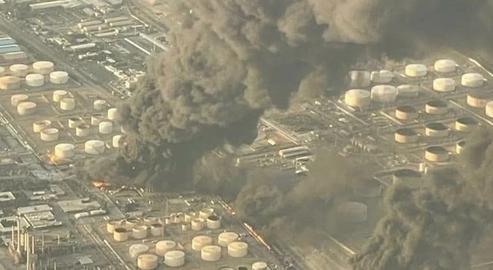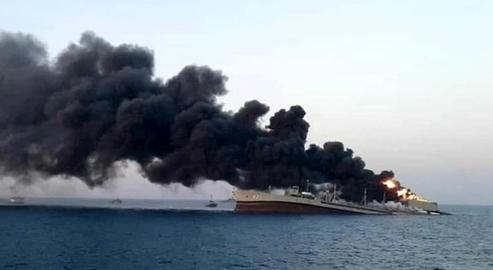Last summer Iran was rocked by around 20 explosions and other serious incidents at various petrochemical, oil, electricity and other industrial installations. As officials scrambled to mitigate both the physical and PR damage, speculation over the cause was rife.
Some of the incidents were specifically attributed to Israel-sponsored sabotage. Others were blamed on opposition groups, through such methods as explosives, drones and cyber-attacks. But no official report about any one of them has since been shared with the public.
Both last year and now in 2021, the wave of apparent attacks began on Iran’s military and nuclear installations before progressing to industrial sites. Last year it started with a huge explosion at the Parchin military complex, east of Tehran, and this year with the attack on the Natanz uranium enrichment site.
Industrial complexes in Iran have been hit by repeated disasters in recent days. Just as the huge fire at Tondgouyan Refinery south of Tehran was finally being put out last Wednesday, another blaze erupted at the Zarand Steel Complex in Kerman. A video of the carnage at Tondgouyan included the moment an explosion rocked the building, sparking the fire. Iranian officials have confirmed the video is genuine in conversations with reporters, but publicly denied the possibility of sabotage.
The refinery fire itself had come just a few hours after Iran’s largest warship, Kharg, caught fire and sank in the Gulf of Oman in an incident officially attributed to a boiler explosion. Hossein Aryan, a military affairs analyst, has pointed out that all warships have a fire containment system and it is very rare for a military-grade vessel to sink because of an onboard fire.
“There are many questions and doubts regarding this sad incident,” Amir Hossein Ghazizadeh, a presidential candidate, wrote on the matter of Kharg. “They must be investigated and answered as soon as possible.”
A New “Tanker War”?
The Kharg incident brough to mind the “tanker war” that erupted during the Iran-Iraq war in the 1980s and if it was not an accident, may have been intended as a message to the Islamic Republic that its navy, merchant vessels and tankers are still vulnerable.
Elsewhere, on May 23 this year, an explosion took place at a chemical complex in Shahin Shahr, Isfahan. According to The Guardian newspaper, the blast occurred at a complex that also houses a drone manufacturing factory, days after Israel had claimed that Iran was providing drones to Hamas in Gaza.
For some time now Israel has been suspected of being behind incidents such as these, even though the state never comments on operations as a matter of policy. On May 18, 2020, the Washington Post reported that Israel had launched a cyberattack on Iran’s Shahid Rajaei port in retaliation for an earlier attempt to penetrate computers that operate rural water distribution systems in Israel. After the cyberattack on the port, computers that regulate the flow of vessels, trucks and goods in Iran all crashed at once, creating massive backups on waterways and roads leading to the facility.
Similarly, after a missile attack on the Israeli cargo ship MV Helios Ray in the Arabian Sea in late February, General Hossein Salami, commander of the Revolutionary Guards, said that events show that the Israeli shipping was “vulnerable anywhere in the world.” Then in early April, an Iranian spy vessel named Saviz, stationed in the Red Sea, was damaged by an apparent Israeli mine attack. Iran's semi-official Tasnim news agency cited unnamed sources as having said the explosion was caused by "limpet mines attached to the hull of the ship".
All these are in addition to a much longer list of attacks on Iran’s nuclear installations that have been widely attributed to Israel, as well as assassinations of nuclear scientists, about which Israeli officials are more blunt.
Sites targeted in the past include Bandar Imam Petrochemicals, Tondgouyan Petrochemicals Phase 2, Karoon Petrochemicals, a power station in Shiraz, Ahvaz Zergan Power Plant, Tarasht Power Plant, Isfahan Power Plant, a Tabriz thermal and gas power plant, Bushehr Boat Factory, the biggest Iranian aluminum production complex in Fars province, and the natural gas condensate plant in Khorasan.
Related Coverage:
Explosions at a Tehran Refinery: Lies by “Anti-Revolutionary” Media?
Iran Feels Humiliated After Latest Nuclear Sabotage
What is Iran Hiding About the Explosion Near a Nuclear Facility?
visit the accountability section
In this section of Iran Wire, you can contact the officials and launch your campaign for various problems



























comments